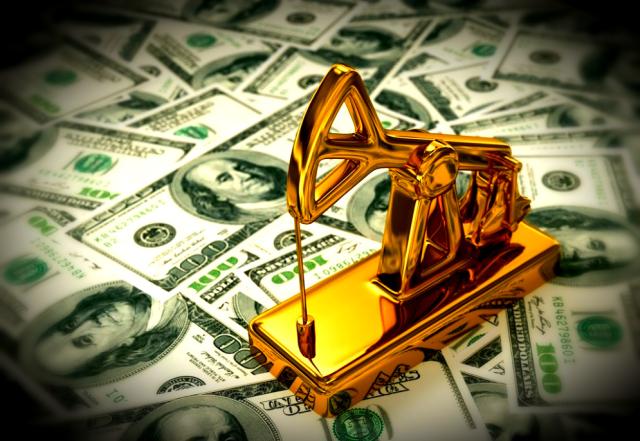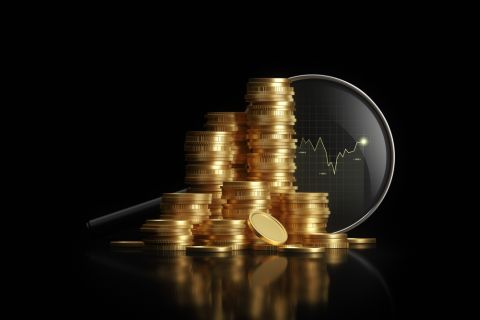
A tidal wave of free cash flow is set to engulf U.S. oil and gas companies in 2020, says Raymond James analyst John Freeman. (Source: Shutterstock.com)
[Editor's note: A version of this story appears in the June 2019 edition of Oil and Gas Investor. Subscribe to the magazine here.]
Given that well costs are down and efficiency is up, it seems operating margins, recycle ratios and debt-adjusted production growth is reaching new heights for many E&P companies. If they can watch their tendency to outspend cash flow, things will finally fall into place, and they may then be able to meet the fervent desires of investors who chant, “Show me the money.” Most of these metrics look better now for most E&Ps than they did back in 2014 when oil prices were rising to $100 per barrel (bbl)—ah, the good ole’ days.
John Freeman, research analyst at Raymond James & Associates, said, in a report in the middle of E&P earnings season, that the energy industry is in the midst of a paradigm shift. It appears that growth for growth’s sake is gone, he said, outmoded if not dangerous. Capital discipline, free cash flow (FCF) and returns are inescapable if one is to woo investors back to the sector. Many other analysts, and CEOs for that matter, are echoing these themes.
“We believe a tidal wave of free cash flow is set to engulf U.S. oil and gas companies in 2020. If correct, it would represent … the new gold standard,” Freeman said.
Shout it from the rooftops. Figure out a way to make these trends pop up constantly on Instagram for the millennial generation of portfolio managers.
__________________________________________________________________________________________________
RELATED:
“A Mandate In Motion For E&Ps” featured in the April 2019 issue of Oil and Gas Investor
__________________________________________________________________________________________________
Analyst David Deckelbaum, who initiated on 20 E&P companies last fall when he moved to Cowen & Co., said at that time, “Even at $50/bbl, we see names capable of delivering sector-competitive production growth while manufacturing free cash yields that garner attention relative to other major S&P sectors …”
The list of E&Ps that promise FCF is growing. Whiting Petroleum Corp. is supposed to throw off $210 million of cash flow this year. Carrizo Oil & Gas Inc. was expected to make FCF in the third quarter, using it to reduce debt. Continental Resources Inc. is tracking toward $1 billion of FCF in 2019; having estimated that at $55 oil, it will make between $500- and $600 million so far. Parsley Energy Inc. said it would achieve “sustainable” FCF in the second half of 2019 at the current strip oil price.
Cabot Oil & Gas Corp. has committed to returning at least 50% of its future FCF to shareholders. Marathon Oil Corp.’s FCF is at its highest since 2013, at a projected $653 million. The dividend only takes up about $200 million.
Diamondback Energy Inc. estimates $750 million of FCF in 2020 if $55 oil is sustained, and it has just authorized a $2-billion share buyback program that goes to year-end 2020.
But if companies are about to start generating FCF, what should they do with it? What do investors really want?
“Since corporations normally do not store treasure in a vault like Scrooge McDuck, they need to identify the best way to return this excess capital to shareholders,” Freeman said.
He polled nearly 300 investors and management teams to ask these very questions. Obviously, the over-levered companies, whether E&P or midstream or oilfield services, will wisely pay down debt first. Therefore in his survey, he gave respondents these three choices: stock buybacks, payment of regular dividends, or one-time “special” dividends.
For investors in large-cap companies, the regular dividend was far and away the preferred choice, by 78%. Further breaking it down by sector, 70% of private companies and private equity want a regular dividend and 89% of those in the oilfield service group preferred to get a regular dividend.
For small-cap companies, however, 48% preferred share repurchases and 33% said they’d prefer to receive dividends. Some 19% said they’d prefer a special dividend. Why this choice?
There is relatively little history of small caps implementing a share repurchase program, or paying a dividend, for that matter. But Freeman explained that their highly variable cash flows make paying a dividend difficult, whereas larger companies with scale tend to be less volatile—if results are poor here, they can make up for it there.
Then too, small-cap investors normally seek tax-advantaged growth instead of a dividend, which could increase their tax liability and negatively affect total return over the long term. Freeman said large-cap investors are more likely to seek a mix of dividends and growth.
“Looking to our group analysis, share repurchases sustained a plurality in every group except midstream,” he said. However, “Clearly from the results of the survey [both overall and by group] there is a growing distaste for share buybacks as a company grows larger,” Freeman said.
The analyst looked at the S&P 500 to see what the preferred method is for those companies, and whether share buybacks during a five-year span (2013 through third-quarter 2018) made much difference. “It is clearly evident that S&P 500 stock buybacks have not improved earnings per share … relative to overall earnings,” he concluded.
Leslie Haines can be reached at lhaines@hartenergy.com.
Recommended Reading
Some Payne, But Mostly Gain for H&P in Q4 2023
2024-01-31 - Helmerich & Payne’s revenue grew internationally and in North America but declined in the Gulf of Mexico compared to the previous quarter.
Kimmeridge Fast Forwards on SilverBow with Takeover Bid
2024-03-13 - Investment firm Kimmeridge Energy Management, which first asked for additional SilverBow Resources board seats, has followed up with a buyout offer. A deal would make a nearly 1 Bcfe/d Eagle Ford pureplay.
Private Equity: Seeking ‘Scottie Pippen’ Plays, If Not Another Michael Jordan
2024-01-25 - The Permian’s Tier 1 acreage opportunities for startup E&Ps are dwindling. Investors are beginning to look elsewhere.
M4E Lithium Closes Funding for Brazilian Lithium Exploration
2024-03-15 - M4E’s financing package includes an equity investment, a royalty purchase and an option for a strategic offtake agreement.
Laredo Oil Subsidiary, Erehwon Enter Into Drilling Agreement with Texakoma
2024-03-14 - The agreement with Lustre Oil and Erehwon Oil & Gas would allow Texakoma to participate in the development of 7,375 net acres of mineral rights in Valley County, Montana.





